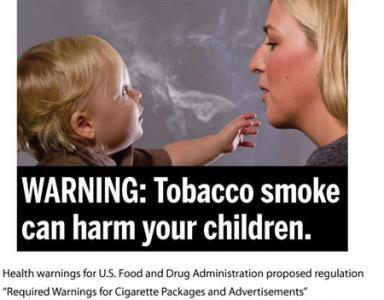Study confirms that living with a smoker increases absenteeism in school children
Children who live in households where they are exposed to tobacco smoke miss more days of school than do children living in smoke-free homes, a new nationwide study confirms. The report from investigators at Massachusetts General Hospital (MGH) – which finds these children have higher rates of respiratory illnesses that can be caused by second-hand smoke and details the probable economic costs of their increased school absence – has been released in the online edition of Pediatrics.
“Among children ages 6 to 11 who live with smokers, one quarter to one third of school absences are due to household smoking,” says Douglas Levy, PhD, of the Mongan Institute for Health Policy at MGH, the paper’s lead author. “On a national basis these absences result in $227 million in lost wages and time for caregivers or their employers.”
The authors note that one-third of U.S. children live with at least one smoker, and more than half of those aged 3 to 11 have detectable levels of a blood marker for tobacco exposure. Second-hand smoking has been shown to increase incidence of ear infections and several respiratory conditions, and school absenteeism is an accessible measure of serious illness in children. Earlier studies of the relationship between lost school days and household smoking have focused on local populations and did not evaluate the severity of the problem’s impact. The MGH team analyzed data from the 2005 National Health Interview Study, an annual in-person survey of representative households nationwide.
Adults responding from households with schoolchildren ages 6 to 11 were asked to evaluate each child’s general health and to answer the following questions:
* how many people smoked inside the home
* how many school days the child missed due to illness or injury during the previous year
* whether the child had three or more ear infections during the previous year
* whether the child had a chest cold or gastrointestinal illness during the preceding two weeks
* whether the child had been disgnosed with asthma, and if so, whether the child had any recent asthma attacks
Of the 3,087 children whose information was analyzed for this study, more than 14 percent lived in a home with at least one person who smoked in the house – 8 percent lived with one household smoker and 6 percent with two or more – which represents 2.6 million children nationwide. Children living with one in-home smoker had an average of 1.06 more days absent, and those living with two or more had 1.54 more days absent than did children living in homes where no one smoked indoors.
 Illnesses associated with exposure to tobacco smoke – including ear infections and chest colds –accounted for 24 percent of absences in children living in homes where one person smoked indoors and 34 percent for those living in homes with at least two in-home smokers. Household smoking did not increase gastrointestinal illness, and while there also was no association with an asthma diagnosis or asthma attacks, the study sample may have included too few children with asthma to reflect smoke exposure’s known role as an asthma trigger.
Illnesses associated with exposure to tobacco smoke – including ear infections and chest colds –accounted for 24 percent of absences in children living in homes where one person smoked indoors and 34 percent for those living in homes with at least two in-home smokers. Household smoking did not increase gastrointestinal illness, and while there also was no association with an asthma diagnosis or asthma attacks, the study sample may have included too few children with asthma to reflect smoke exposure’s known role as an asthma trigger.
The researchers also calculated the potential costs associated with the need to care for children absent from school due to smoke-exposure related illness – costs including lost income for parents without paid time off, the costs to employers of the lost work, and the inability of caregivers not employed outside the home to take care of usual household tasks. “The total impact nationwide was $227 million in lost wages and household work for the families of the 2.6 million children living with smokers and for their employers,” Levy says. “Since almost half of the smoking households in our study had low incomes, that impact may be strongest on households least able to afford it.”
He adds, “The health impact of living with a smoker is probably more extensive than our study shows, since the survey only asked about three conditions associated with smoke exposure and we know there are several more. And since the absentee levels we report are averages, there are probably are kids who miss much more school because they live with smokers than our study found. More research is needed to help understand the long-term health, developmental and economic consequence of growing up in a home where people smoke.” Levy is an assistant professor of Medicine at Harvard Medical School.
###
Nancy Rigotti, MD, of the Mongan Institute for Health Policy and the MGH Tobacco Research and Treatment Center is senior author of the Pediatrics report, and Jonathan Winickoff, MD, MPH, MassGeneral Hospital for Children is a co-author. The study was supported by grants from the Flight Attendant Medical Research Institute, the American Academy of Pediatrics, and the National Heart, Lung and Blood Institute.
Celebrating the 200th anniversary of its founding in 1811, Massachusetts General Hospital (http://www.massgeneral.org) is the original and largest teaching hospital of Harvard Medical School. MGH conducts the largest hospital-based research program in the United States, with an annual research budget of nearly $700 million and major research centers in AIDS, cardiovascular research, cancer, computational and integrative biology, cutaneous biology, human genetics, medical imaging, neurodegenerative disorders, regenerative medicine, reproductive biology, systems biology, transplantation biology and photomedicine.
###
Contact: Katie Marquedant
.(JavaScript must be enabled to view this email address)
617-726-0337
Massachusetts General Hospital